You learn by making mistakes. For this reason, knowing the most frequent mistakes is the first step in learning not to make them anymore.
Any man who wants to boast of being a gentleman must know what we can define as the “basic rules of elegance”.
These are unwritten rules, which are learned in the family, in books or from the attendance of other elegant men and which, with due precautions, can also be applied today, especially in the most rigorous and formal contexts, where etiquette has not yet passed and the canon of elegance still plays a distinctive role.
As we said in the beginning, it is an unwritten code and the lack (fortunately) of an official code has favored the flourishing of schools of thought that are often conflicting with each other.
We will not go into detail but we will be content to point out the 23 most frequent mistakes that you should be careful not to commit on formal occasions, to always be impeccable, from head to toe.
Menu
The oversized/undersized suit
Perhaps there is nothing worse than wearing an “oversized” or an “undersized” suit.
Sometimes the inadequacy appears evident, with oblong or skimpy jackets, and bulky or compressed trousers; however, the devil often hides in the details, in the folds that shouldn’t be there or in those small defects that break the harmony.
To be sure, always choose your suit according to your body, preferably have it made to measure.
The tuxedo (or black suit) before 6pm
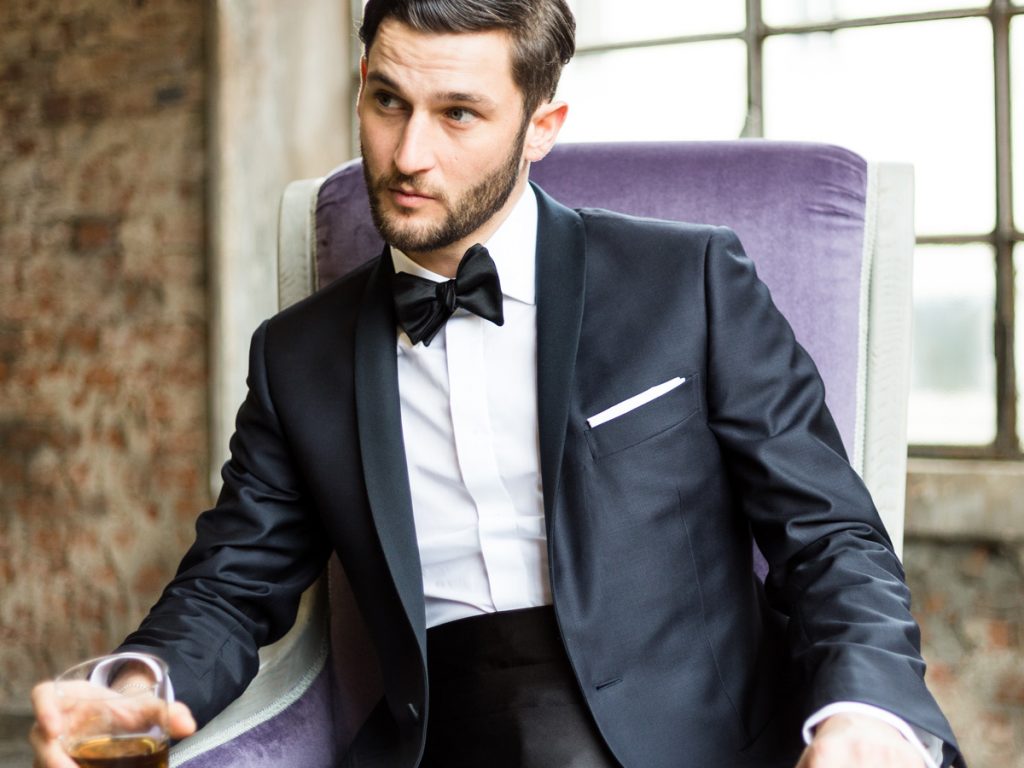
Americans do not care now, but one of the golden rules in the “instruction manual of the tuxedo” – and applicable in general for black suits – is that you must not wear it during the day, or in any case never before 6pm.
The tuxedo can be considered a men’s evening suit: if it’s an evening suit, then why wear it during the day?
The broken suit not broken
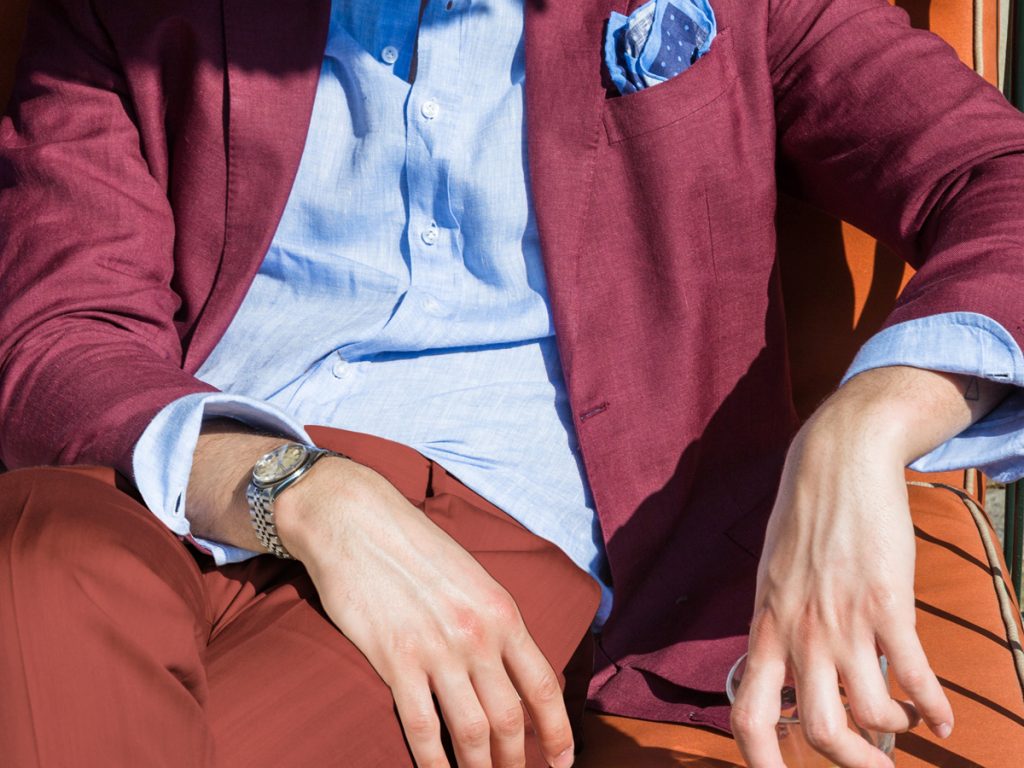
The broken suit, or spezzato, suit has this name because it identifies the desire to break the chromatic harmony of the outfit by wearing different colors.
Wearing two shades of the same color is not a broken suit: technically it is tone on tone.
Tone-on-tone is very difficult to master: the risk of a combination of unpleasant shades is always around the corner. When in doubt, therefore, always break with conviction.
The broken suit too broken
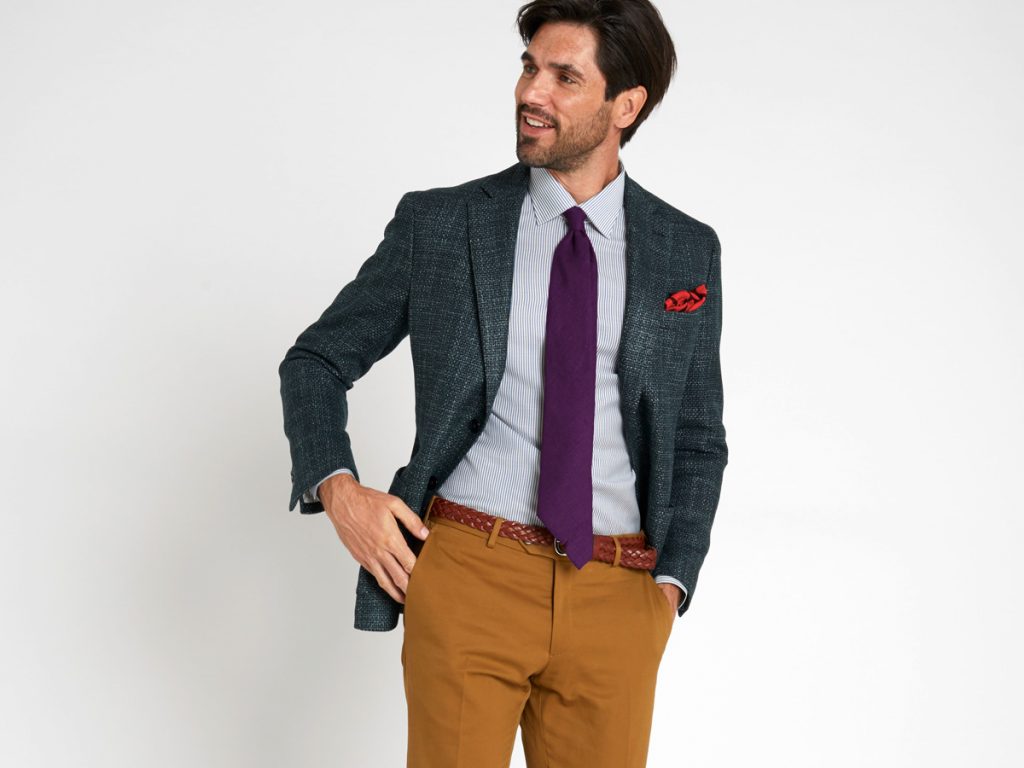
If daring too little with colors is a mistake, daring too much is also a mistake. We want to avoid the unconvincing tone on tone but also the harlequin effect of a chromatic soup.
Better therefore limit yourself to 3, maximum 4 colors for your outfit, preferring the classics: blue, beige, gray, white to always be on the safe side.
The tie without a jacket
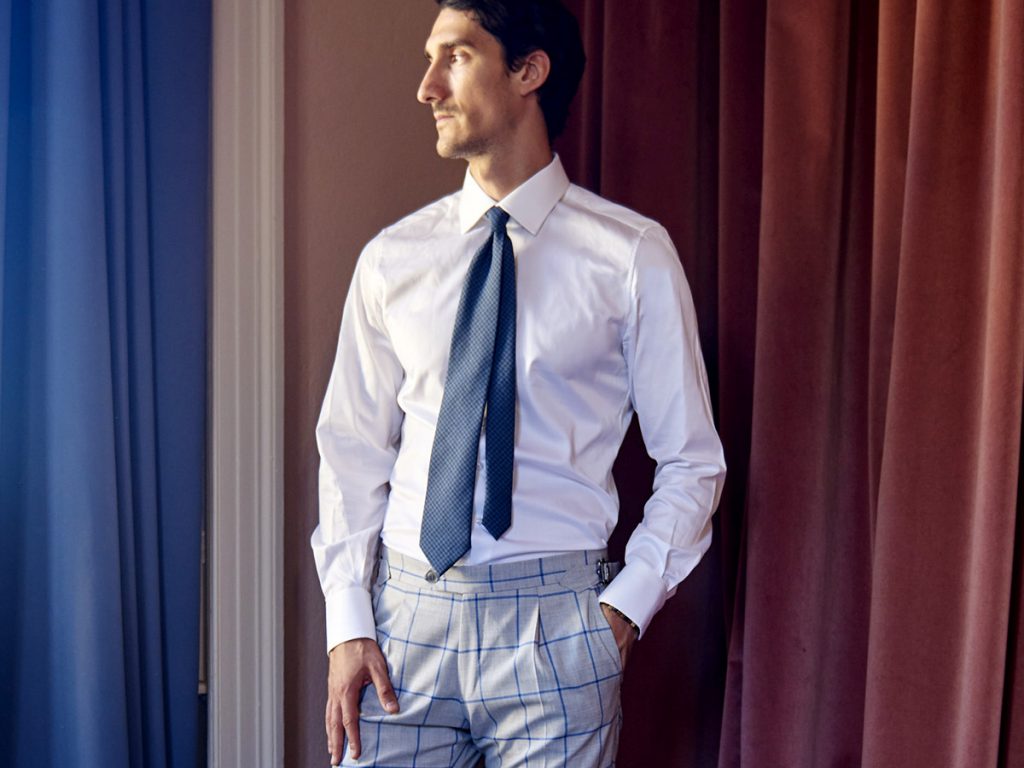
If the term “jacket and tie” has come into common use, there is a reason.
The reason is precisely the formal inseparability of this combination: the etiquette of classic elegance requires that the tie must always be worn while also wearing the jacket over a shirt.
Wearing only a shirt and tie is not contemplated by classic elegance.
The tuxedo without a bow tie
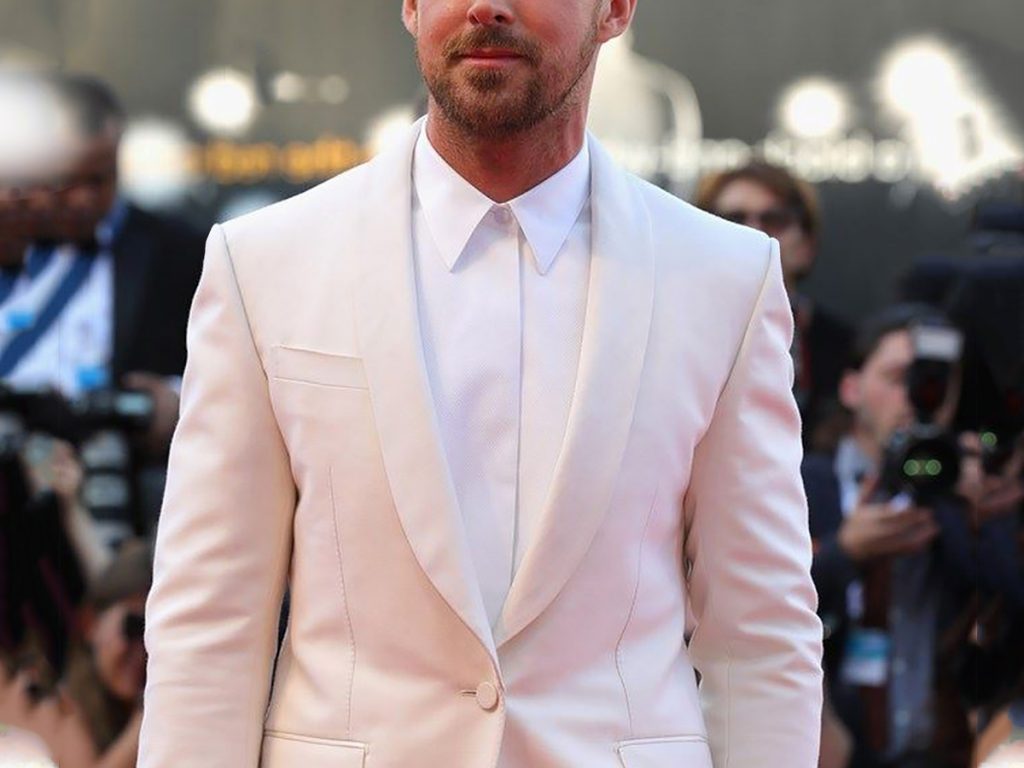
The tuxedo requires a bow tie. Full stop.
If you plan to wear a tuxedo, (but also a morning suit or a tailcoat), put the tie in the closet: the perfect companion is the bow tie, essential for classic black tie and white tie looks.
Don’t have a bow tie? All you have to do is leave the tuxedo in the wardrobe and choose an elegant suit, perhaps a three-piece suit with a matching vest, to wear with a tie.
The pocket square of the same colour of the tie
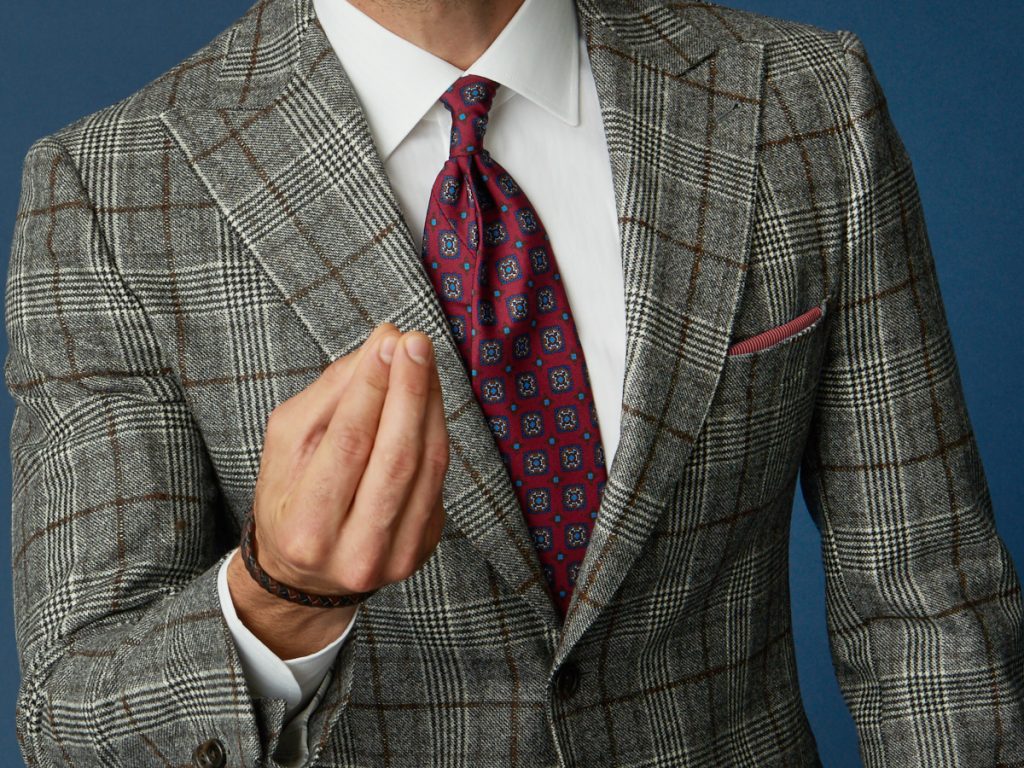
If you thought matching the pocket square with the tie was a good idea… well, you thought wrong.
The pocket handkerchief is a chromatic accent, a distinctive sign, an accessory quirk.
It must stand out from the rest of the outfit, especially the tie: choose the right pocket square and of the same color or pattern of your tie.
The same rule also applies to pocket square and shirt, with the sole exception of the classic combination of white pocket square and white shirt.
Visible undershirt
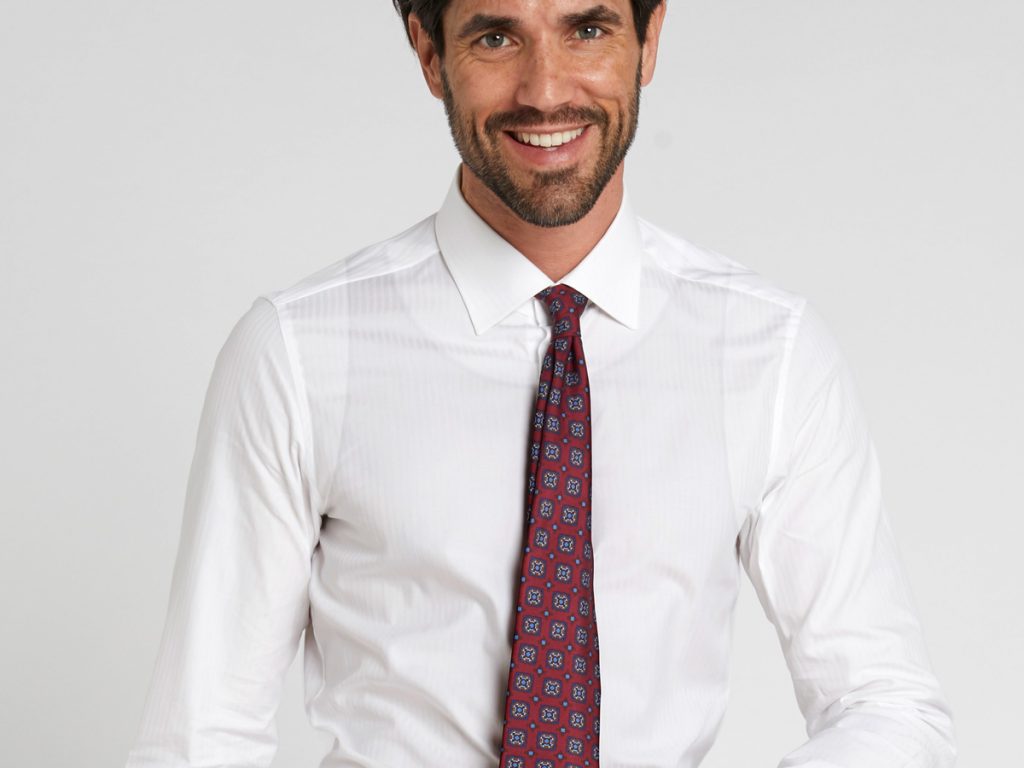
If it is true that transparencies and “see-not-see” can be captivating in some cases … this is not the case.
If you have to wear a white shirt or a shirt made from a light fabric, make sure what you’re wearing underneath doesn’t show before you go out.
Un-ironed shirt

A symbol of freshness, cleanliness and personal care, a well-ironed shirt is the best business card that can be presented in a context where elegance has value.
Conversely, an un-ironed shirt results in a bad first impression, which is unacceptable when formality is not optional.
We know, the shirt is the most difficult garment to iron, that’s why you should read our guide.
The sleeves of the shirt or jacket too long or short
If you want to avoid looking mutilated or to have overgrown your clothes, it is essential to wear a jacket and shirt with sleeves of the right length.
The relationship between the sleeve of the jacket and the shirt is essential to determine the right length: etiquette wants the sleeve of the shirt to appear stretched and relaxed with arms lowered, that the cuff of the shirt reaches the beginning of the thumb and extends about 1 centimeter (or a little more) beyond the sleeve of the jacket.
It goes without saying that choosing a tailored shirt is highly advisable in order not to make mistakes.
The sleeves of the shirt rolled up
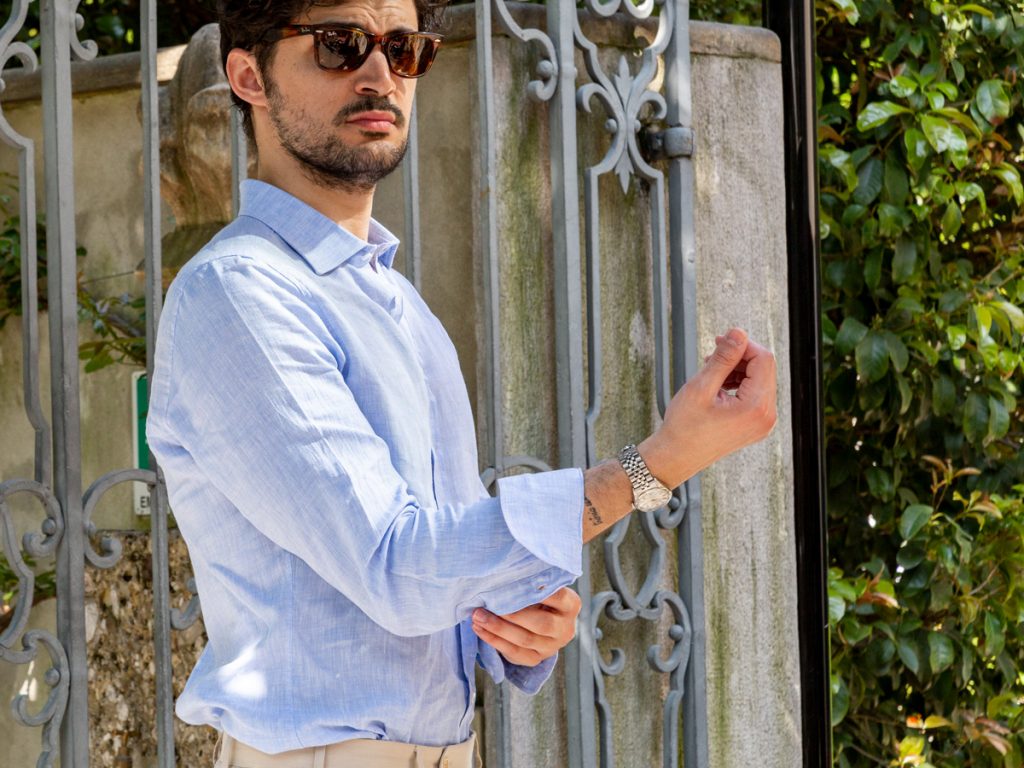
We know, the heat can be an ugly beast, especially when the context requires a certain formality and rigor.
The temptation to take off the jacket and roll up the sleeves of the shirt is directly proportional to the increase in perceived temperature, but “if you want to look elegant, you have to suffer a little”.
So resign yourself: long, well-stretched shirt sleeves.
The shirt out of the pants
Do you want to leave the shirt untucked and show off a “cool” and disengaged style?
You can, as long as you do it outside of formal contexts. Otherwise the place of the shirt is always inside the pants.
The short-sleeved shirt
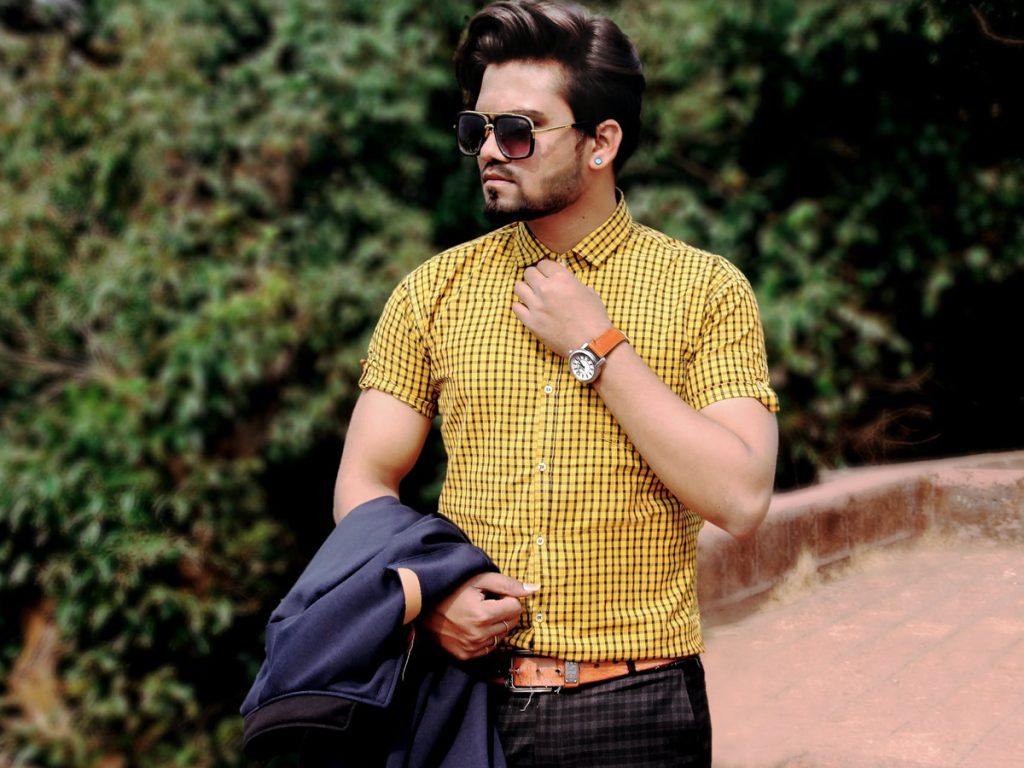
Considering its limited popularity as a piece of clothing, your wardrobe will likely have little room for short-sleeved shirts.
If you have to attend a formal event, leave them where they are and choose one of the shirts on the side.
The last button of the jacket fastened
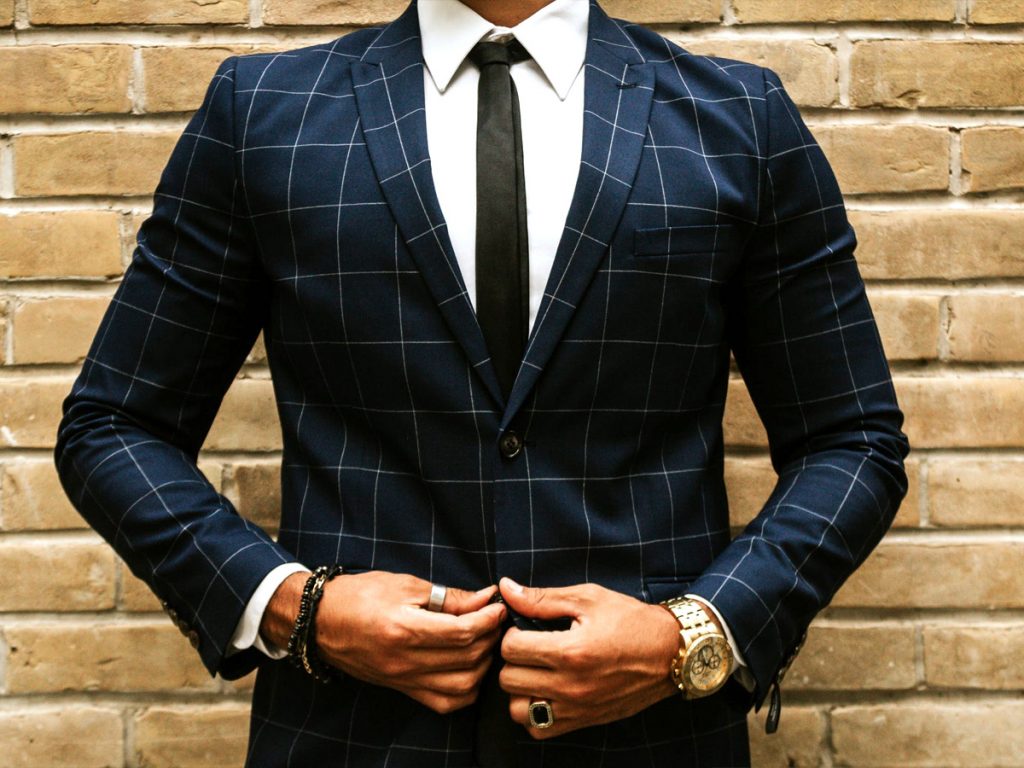
Just because you see a button and a buttonhole does not mean that you always have to fasten them.
The most classic example of this “rule” is that of the single-breasted jacket: never fasten the last button at the bottom.
If you are wearing a two-button jacket, fasten only the first one; if you wear a three-button jacket, fasten only the central button and if you want the first one too.
If you sit down, unfasten them all.
The double-breasted jacket unbuttoned
Things change whether you’re wearing a jacket, blazer, or double-breasted jacket.
Despite some style licenses granted in contemporary contexts, the dictates of classical elegance require that the double-breasted jacket must always be fully fastened and must always be kept that way, whether you are standing or sitting.
The belt with the tuxedo
The belt does not go with the dry and minimal style of the classic tuxedo and risks weighing down the masculine look at waist height, subtracting elegance and ease.
So what can you do to make sure you support the pants? Wear suspenders, perfect companions for the black tie look.
Pants too short or too long
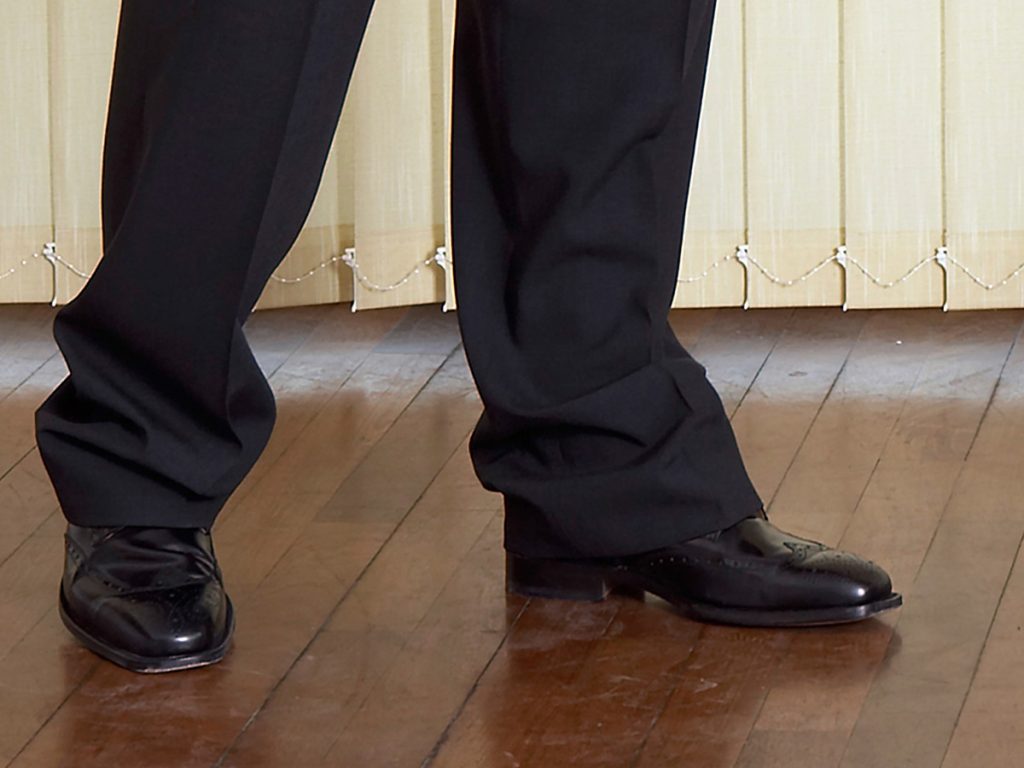
You know the previous advice on choosing the right length of jacket and shirt sleeves?
Ditto with pants, if you want to avoid appearing in a “dandy boy scout” outfit.
Choosing the right pants length is pretty simple.
The elegant trousers without creases
One of the canons of classic elegance concerns the ironing of elegant trousers: they must be strictly ironed, creating a vertical crease in the center of the leg.
The visual effect is a line that slims the figure and gives a more rigorous and elegant look to the whole.
On the other hand, the crease is not necessary for more sporty trousers, such as chinos, which are reserved for a more casual look.
If you want to be really formal, don’t forget the crease of the pants.
The tie knot too big
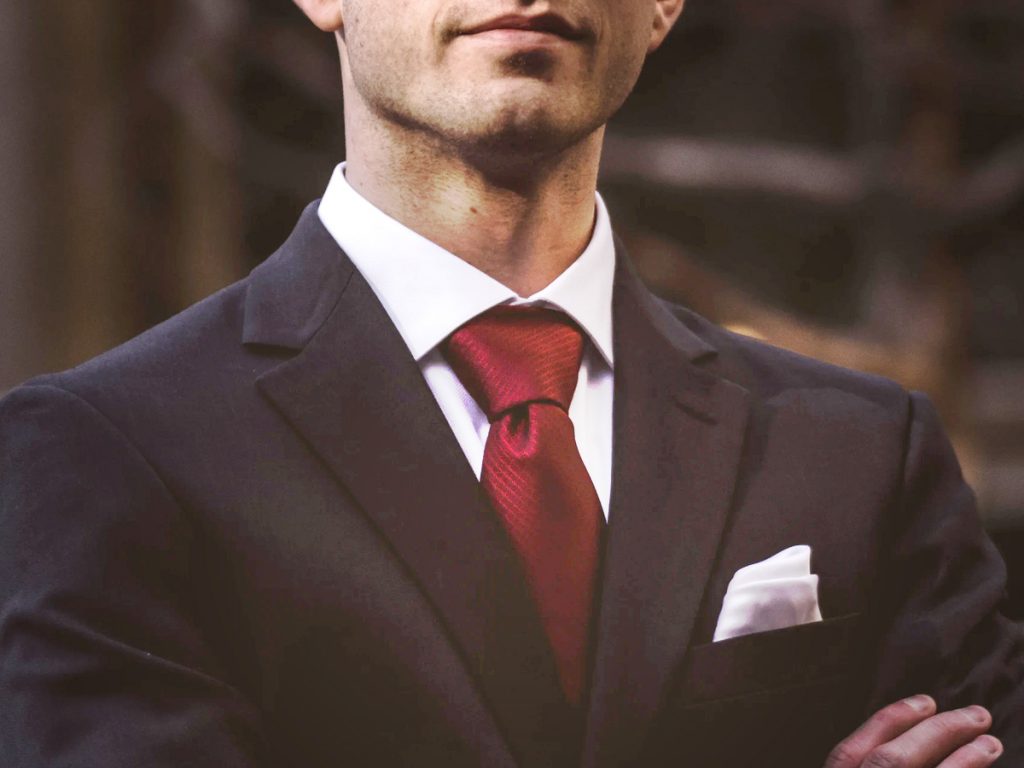
The goal of the tie is also to slim the figure, how could it be done with a knot that is too large?
Choose the right knot, also according to the collar of your shirt and the tie fabric and constructions.
For heavy ties use knots with few windings to keep the thickness down.
White socks
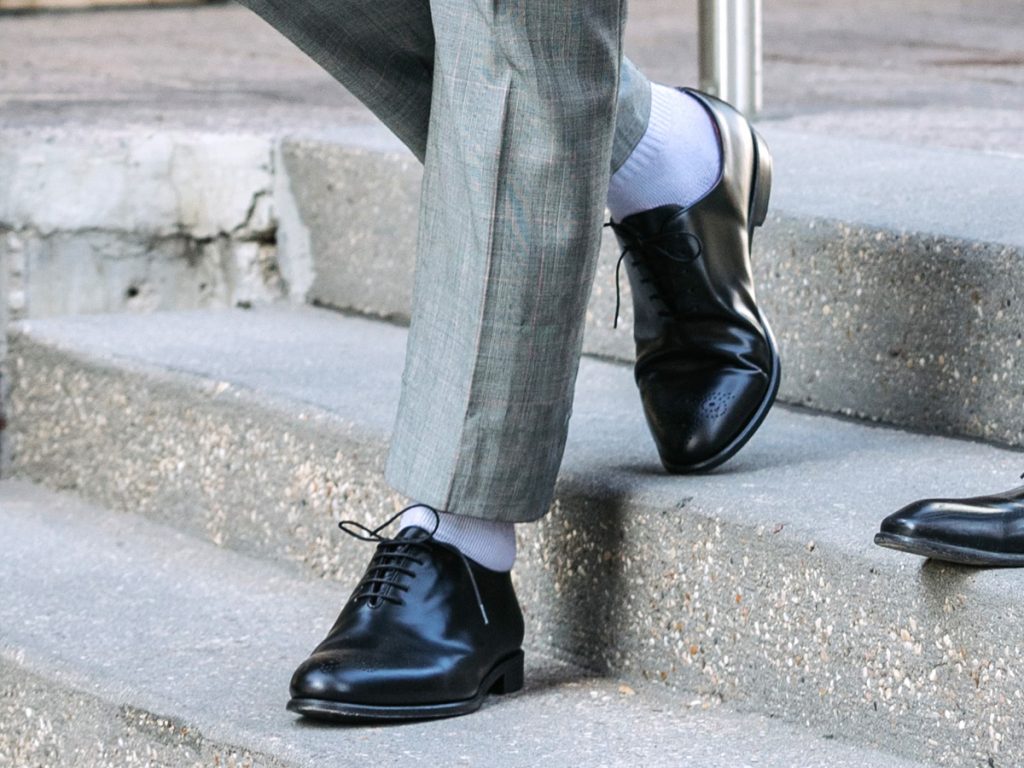
Wearing white socks with a formal suit is perhaps one of the most serious deadly sins you can commit against classic elegance.
Virtually impossible to combine – with the exception of a total white, but truly “total” look – they are equally impossible to hide, unless you opt for a pair of pants that are too long, but we have already talked about this.
Yet choosing the right socks isn’t difficult.
Sports shoes
They are allowed – in fact – in sports contexts, but in the world of classic formal elegance, sports shoes or sneakers, if you prefer, are officially banned.
With an elegant suit you must wear only elegant shoes, better if well polished.
Elegant shoes without socks
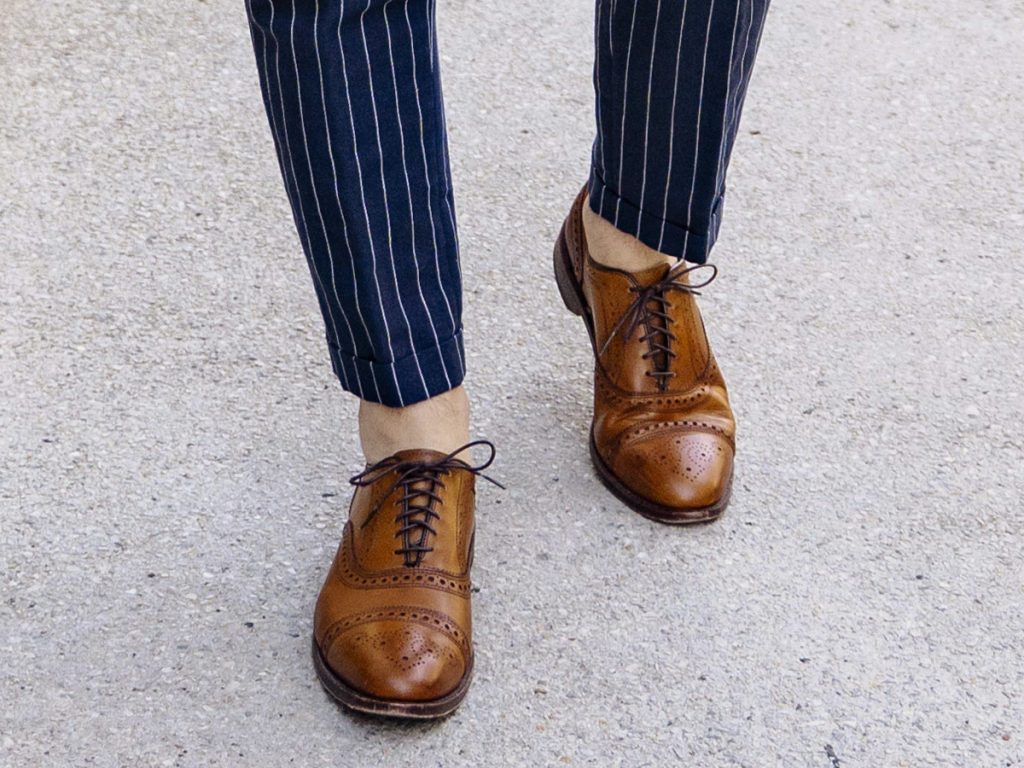
Wearing suit shoes without socks … is not elegant.
There is no need to go around it: the visual effect of an elegant shoe without socks is not very different from that of an elegant shoe with white socks, if not perhaps worse.
The etiquette provides for the choice of the correct sock, even if only to harmonize the chromatic transition from the shoe to the trousers.
The fanny pack
Perhaps considered the least elegant accessory, the fanny pack should never ever be contemplated in a formal attire.
If you have to bring something with you and you need a purse or a fanny pack to do so, there is only one solution: don’t bring it.

